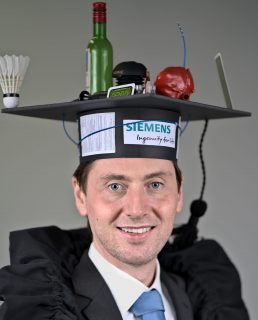Martin Koch
Artificial Intelligence based Methods for Atrial Fibrillation Ablation Procedures
As one of the most common types of heart arrhythmias, atrial fibrillation is a severe disorder of the heart rhythm affecting the left atrium. Among the most serious complications count stroke and tachycardia mediated cardiomyopathy. Moreover, recurrent symptoms impair patients’ quality of life and functional status. Common treatment options for rhythm control are antiarrhythmic drug therapy and catheter ablation procedures. Cardiac ablation procedures are usually performed minimally invasive in electrophysiology labs. During these procedures, ablation catheters are navigated into the heart chamber via the venous system to ablate specific areas involved in conduction of irregular impulses. For treatment of paroxysmal atrial fibrillation, ipsilateral pulmonary vein isolation is a common ablation pattern. Interventional X-ray imaging is commonly employed for catheter guidance and control. Furthermore, electroanatomic mapping systems can be used for treatment of complex arrhythmia. Ablation planning data can be used during X-ray guided procedures as well as included in mapping systems to support the physician by supplying further context information.
In this thesis, artificial intelligence based methods for interventional treatment of atrial fibrillation ablation procedures are presented. We developed an algorithm for automatic lesion planning targeted at pulmonary vein isolation procedures for treatment of atrial fibrillation. This method facilitates a landmark-constrained non-rigid registration algorithm for accurate alignment of left atrium heart models. Procedure planning data is generated for the individual patient anatomy to be superimposed during the ablation procedure. A quantitative and qualitative evaluation of the algorithm was performed on clinical datasets. The accuracy of the automatically generated ablation planning lines met clinical expectations.
Another aspect investigated in this thesis is the optimization of individual fluoroscopic projection angles for X-ray guided cardiac procedures. We developed an algorithm to estimate individual X-ray C-arm angulations based on pre-procedure planning information, taking individual patient anatomy into consideration. The mathematical framework can be applied for monoplane and biplane C-arm imaging systems. Limitations of C-arm imaging systems in terms of feasible rotation angles are also taken into account during optimization. The algorithm was evaluated on clinical data for ipsilateral pulmonary vein isolation. Patient-specific C-arm angulations were computed and compared against commonly used standard angulations in terms of foreshortening of planning structures in projection images. By applying individually optimized X-ray angulations, less foreshortening could be achieved.
